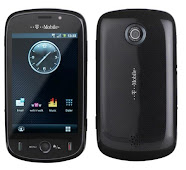 China's well-known networking and telecommunications equipment company, Huawei Technologies Co. Ltd, is getting a start in mobile devices, with a portfolio of gadgets ranging from cell phones to USB modems, wireless modems and data cards.
China's well-known networking and telecommunications equipment company, Huawei Technologies Co. Ltd, is getting a start in mobile devices, with a portfolio of gadgets ranging from cell phones to USB modems, wireless modems and data cards.
Established in 1988 by Ren Zhengfei, Huawei specializes in research and development (R&D), production and marketing of communications equipment, and in providing customized network solutions for telecom carriers.
Huawei Device provides a diverse range of end-user devices, including handsets (UMTS, GSM, CDMA,TD-SCDMA), mobile broadband devices (USB modems, wireless modems, data cards), home solutions (fixed wireless terminals, wireless gateways) and video conferencing products. Among the division's customers are T-Mobile, Vodafone, TATA, China Telecom, British Telecom and Telefonica.
The new division is already on the right track. According to statistics in 2008 the division's sales revenue was US$4 billion and it shipped 80 million units. ABI Research revealed that, in the same year, Huawei's mobile broadband's global market share was more than 55 percent.
Huawei rocked the world when it showed its Android device at the Mobile World Congress in Barcelona in February. T-Mobile recently unveiled the "Huawei Android" T-Mobile Pulse, which will be launched in October 2009 and will cost *179.99 ($290) on a pay-as-you-go contract.
The Pulse provides one-touch access to the web, and comes pre-installed with some of the most popular services from Google as well as the Android Marketplace. The black polished chrome smartphone is powered by Qualcomm's MSM7200A chipset and weighs just 130 grams.
It features a trackball and a full touch-screen 3.5-inch HVGA display with auto-rotates. The Pulse also features a 3.2 megapixel, auto-focus camera, a 2 GB internal memory and a micro SD card slot. The handset also offers access to corporate email through the Road sync client.
I had this smartphone in my hand at P&T/Wireless & Nertwork Comm China 2009 in Beijing on Thursday and was impressed by its touchscreen capability and applications.
Meanwhile, in the mobile broadband area, Huawei recently announced that the company has now shipped more than 60 million mobile broadband units (including data cards, dongles and embedded modules), across more than 133 countries.
This milestone highlights Huawei's deep understanding of the operator business.
In February 2008, Huawei launched the E510, the world's first terminal to support mobile TV services, and the D100, a router gadget. In June, Huawei launched the E180, the world's first slim mobile broadband terminal. This year, Huawei introduced the world's slimmest wireless modem, E5 and the E182E, the world's first HSPA+ mobile broadband.
The next logical question is whether this Chinese private company will enter the consumer market by offering their handsets with the Huawei brand?
No, to enter the consumer market, Huawei would need large distribution channels and a strong brand for consumers' minds. it would be hard to compete with big brands like Nokia or Samsung
Huawei vision is clear: having close partnerships with operators and creating value by increasing ARPU for operators through innovation. Keep maintaining Huawei co-branding strategy in delivering handsets as well as mobile broadband devices."
It's a good reason and makes good sense.
News
- Manchester United fightback foils Wolfsburg
- Miyabi can come
- New G20 framework benefits Indonesia
- Yahoo sees $150M windfall from Alibaba.com sale
- The new Nokia Booklet 3G: A netbook or a notebook?
- Huawei launches debut mobile devices
- Brussels A city of more than you might think
- Julia Roberts Will come to Indonesia
- BlackBerry Curve 8520 For Intermediate Segment









0 comments
Post a Comment